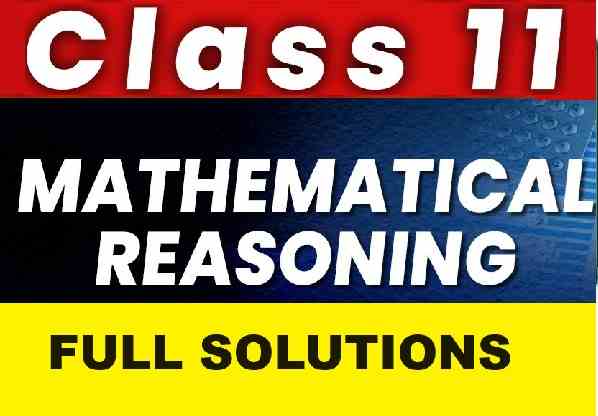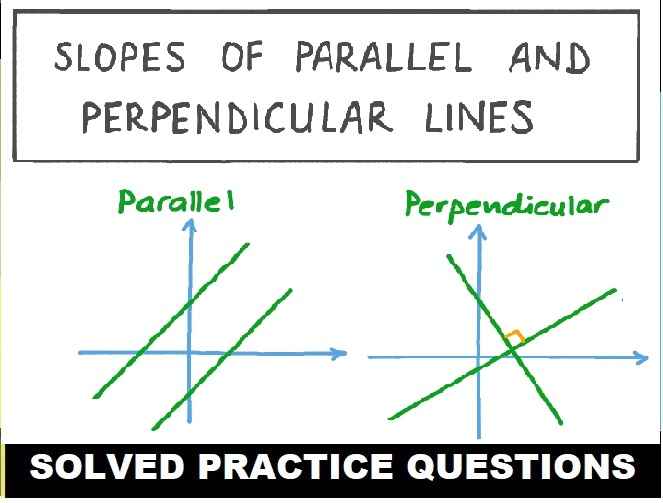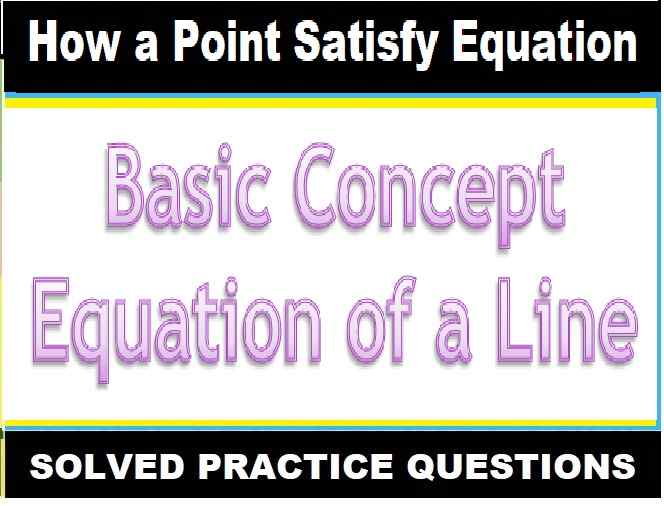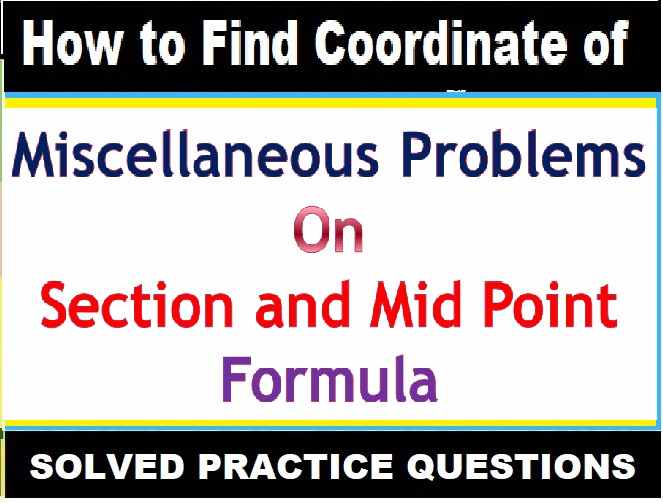Mathematical Reasoning ISC Class-11 ML Aggarwal Solutions Chapter-3. Step by step Solutions of ML Aggarwal ISC Class-11 Mathematics with Exe-3.1, Exe-3.2, Exe-3.3, Exe-3.4, Exe-3.5, Exe-3.6, Exe-3.7, and Chapter Test Questions. Visit official Website CISCE for detail information about ISC Board Class-11 Mathematics.

Mathematical Reasoning ISC Class-11 ML Aggarwal Solutions Chapter-3
| Board | ISC |
| Class | 11 |
| Subject | Mathematics |
| Chapter- | Mathematical Reasoning |
| Session | 2024-25 |
| Topics | Solutions of ML Aggarwal |
Mathematical Reasoning
Simple Statements : A statement is called simple if it cannot be broken down into two or more statements.
Compound Statements : A compound statement is the one which is made up of two or more simple statement.
Connectives : The words which combine or change simple statements to form new statements or compound statements are called connectives.
Conjunction : If two simple statements p and q are connected by the word ‘and’, then the resulting compound statement “p and q” is called a conjunction of p and q is written in symbolic form as “p ∧ q”.
Note:
- The statement p ∧ q has the truth value T (true) whenever both p and q have the truth value T.
- The statement p ∧ q has the truth value F (false) whenever either p or q or both have the truth value F.
Disjunction :
If two simple statements p and q are connected by the word ‘or’, then the resulting compound statement “p or q” is called disjunction of p and q and is written in symbolic form as “p ∨ q”.
Note:
- The statement p ∨ q has the truth value F whenever both p and q have the truth value F.
- The statement p ∨ q has the truth value T whenever either p or q or both have the truth value T.
Negation: An assertion that a statement fails or denial of a statement is called the negation of the statement. The negation of a statement p in symbolic form is written as “~p”.
Note:
- ~p has truth value T whenever p has truth value F.
- ~p has truth value F whenever p has truth value T.
Negation of Conjunction:
The negation of a conjunction p ∧ q is the disjunction of the negation of p and the negation of q.
Equivalently we write ~ (p ∧ q) = ~p ∨ ~q.
Negation of Disjunction : The negation of a disjunction p v q is the conjunction of negation of p and the negation of q. Equivalently, we write ~(p ∨ q) = ~p ∧ ~q.
Negation of Negation : Negation of negation of a statement is the statement itself. Equivalently, we write ~(~p) = p
The Conditional Statement :
If p and q are any two statements, then the compound statement “if p then g” formed by joining p and q by a connective ‘if-then’ is called a conditional statement or an implication and is written in symbolically p → q or p ⇒ q, here p is called hypothesis (or antecedent) and q is called conclusion (or consequent) of the conditional statement (p ⇒ q).
Quantifiers
Quantifiers are phrases like “There exists” and “For all”. A word closely connected with “there exists” is “for every” (or for all). Hence, the words “And” and “Or” are called connectives and “There exists” and “For all” are called quantifiers.
Implications in Mathematical Reasoning
It is possible to write statements with implications such as “If ”, “only if ”, “ if and only if ”. The statements with “if-then” are very common in mathematics.
A sentence with if p, then q can be written in the following ways.
- p implies q (denoted by p ⇒ q)
- p is a sufficient condition for q
- q is a necessary condition for p
- p only if q
- ∼q implies ∼p
‘If and only if’, represented by the symbol ‘⇔‘ means the following equivalent forms for the given statements p and q.
(i) p if and only if q
(ii) q if and only if p
(iii) p is necessary and sufficient condition for q and vice-versa
(iv) p ⇔ q
Contrapositive and converse
Contrapositive and converse are certain other statements which can be formed from a given statement with “if-then”.
- The contrapositive of a statement p ⇒ q is the statement ∼ q ⇒ ∼p .
- The converse of a statement p ⇒ q is the statement q ⇒ p.
- p ⇒ q together with its converse, gives p if and only if q
Validating Statements
The following methods are used to check the validity of statements:
(i) direct method
(ii) contrapositive method
(iii) method of contradiction
(iv) using a counter example
Exe-3.1
Mathematical Reasoning ISC Class-11 ML Aggarwal Solutions Chapter-3
Exe-3.2
Mathematical Reasoning ISC Class-11 Solutions Chapter-3
Exe-3.3
Mathematical Reasoning ISC Class-1 Solutions Chapter-3
Exe-3.4
Mathematical Reasoning ISC Class-11 ML Aggarwal Solutions Chapter-3
Exe-3.5
Mathematical Reasoning ISC Class-11 ML Aggarwal Solutions Chapter-3
Exe-3.6
Mathematical Reasoning ISC Class-11 ML Aggarwal Solutions Chapter-3
Exe-3.7
Ch-3 Mathematical Reasoning ISC Class-11 Mathematics
Chapter Test
Mathematical Reasoning ISC Class-11 ML Aggarwal Solutions Chapter-3
-: End of Mathematical Reasoning ISC Class-11 ML Aggarwal Solutions Chapter-3 :-
Return to :- ML Aggrawal ISC Class-11 Vol-2 Maths Solutions
Thanks
Please share with your friends


